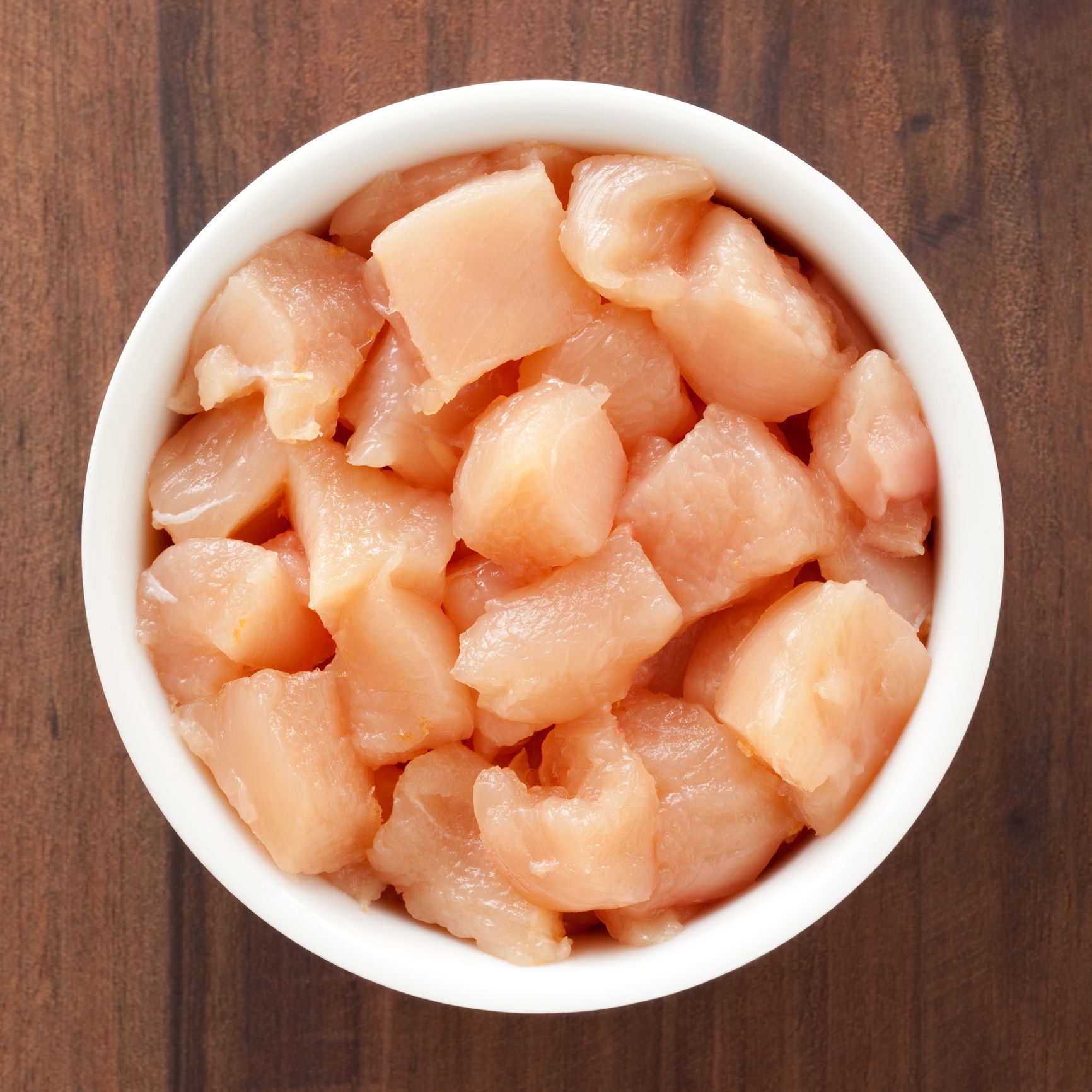What Happens If I Accidentally Eat Raw Chicken?
Doctors Weigh In…..
Chicken tartar is definitely not a thing…
The following written content by ELIZABETH BACHARACH AND TRISH CLASEN MARSANICO

You can order a medium-rare steak at a restaurant, enjoy ceviche on the beach, try a bite of beef carpaccio or tartar, and eat sushi, sashimi, and poke bowls, galore. But raw chicken? That is always a hard, haaard pass. You may instinctively know this, but what comes after is a bit of a mystery. It’s fair to question, What happens if you eat raw chicken?
Consuming raw or undercooked chicken can lead to food poisoning, stomach pains, nausea, and/or diarrhea (so not fun!)—thanks to bacteria often found in chicken that typically gets killed off during grilling, frying, or baking. So, you should always stress about cooking chicken to 100 percent doneness. Every. Single. Time.
The simplest solution to avoiding this gastro-nightmare is to always make sure your chicken is truly fully cooked. This means using a thermometer to check that your chicken clocks in at the FDA-recommended safe cooking temperature of 165°F.

But you’re not always the one doing the cooking. What happens if you go to a friend’s house and bite into a piece of poultry only to discover it’s an undercooked (or even raw!), fleshy pink inside that screams “don’t eat me?” Do you immediately spit it out across the table? (Sorry, everyone.) Start chugging water to rinse your mouth? Run to the bathroom?
Before you start freaking out, see what gastroenterologists have to say about what to do if you eat raw chicken—and test kitchen pros for how to prevent yourself from consuming a raw breast or wing in the first place.
What happens if you eat raw chicken, really?
Is it safe to eat raw chicken? Simply put, no. You might get sick with food poisoning. And unless you’re Emily Charlton from The Devil Wears Prada, those two dreaded words are enough to send chills up and down your spine. Read more from W.H. Magazine.
How long after eating raw chicken will you get sick?
In the case of campylobacter, symptoms don’t typically start to present themselves until two to five days after exposure, while salmonella can start wreaking havoc in as little as six hours, per the CDC. Similarly, these infections vary in length, from 24 hours (clostridium perfringens) to a week (campylobacter). The incubation time for E. coli is most commonly three to four days. Read more W.H. Magazine.





